Contrapunctus V from the Art of the Fugue
José Rodríguez Alvira
Structure of the Fugue
The exposition uses both versions of the subject. Also, the subjects enter in stretto. A short episode leads to a second exposition. Bach systematically explores numerous stretti possibilities in the rest of the fugue. Follows the structure of the fugue. Click the graphics to listen to the section and read a brief discussion:
1. Exposition

The alto starts with the subject. The bass answers with the ascending subject in stretto followed by the soprano (also ascending) and finally the tenor ends the exposition with the descending version of subject. All voices enter in a 12 beats stretto. The first three subjects are in D minor, the last one is in A minor.
Although we do not find a counter-subject, several motives from the subject will be constantly used as free counterpoint and as material for developing the episodes:
2. Second exposition

A short episode based on the last notes of the subject takes us to a second exposition. We will see again the use of both versions of the subject appearing in stretto. The first two subjects are in A minor and the last two in D minor. The voices that used the ascending version in the first exposition now use the descending one and vice versa:
3. Stretto ascending-descending 2 beats
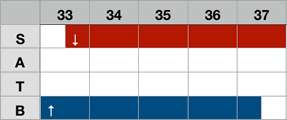
Another episode takes us to F major (we visit the Bb flat major and G minor keys before). The subject appears in measure 33 in an ascending-descending stretto at a 2 beats distance between the bass (ascending) and soprano (descending):
4. Stretto descending-ascending 2 beats
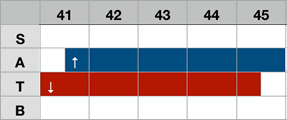
After an episode, we find a new stretto similar to the previous one but in the key of G minor between the tenor (descending) and the bass (ascending):
5. Stretto descending 6 beats and episode

A new episode leads us to another stretto between the bass and the tenor in the key of B flat major. Both voices use the descending version of the subject. The entries are at the distance of 6 beats. The stretto is followed by an episode made of another stretto. This time it is a four voice stretto using the first notes of the subject:
6. Stretto ascending 6 beats and episode

This section is similar to the previous one. Now the subject is used in the ascending form and it appears in the soprano and alto voices. Follows a similar episode using the first notes of the subject (ascending). We are again in the key of D minor:
7. Stretto descending 4 beats
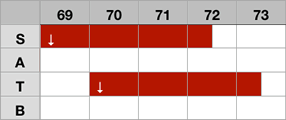
After the 2 and 6 beats stretti (and those of the exposition and counter-exposition at 12 beats), Bach creates a stretto between the soprano and the tenor at a 4 beats distance using the subject in its original form:
8. Stretto ascending 4 beats
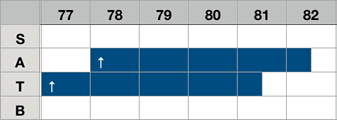
As expected, Bach repeats the previous stretto, this time using the ascending form between the tenor and alto:
9. Final measures
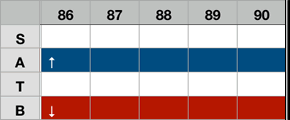
The fugue ends with the simultaneous presentation of both subjects: